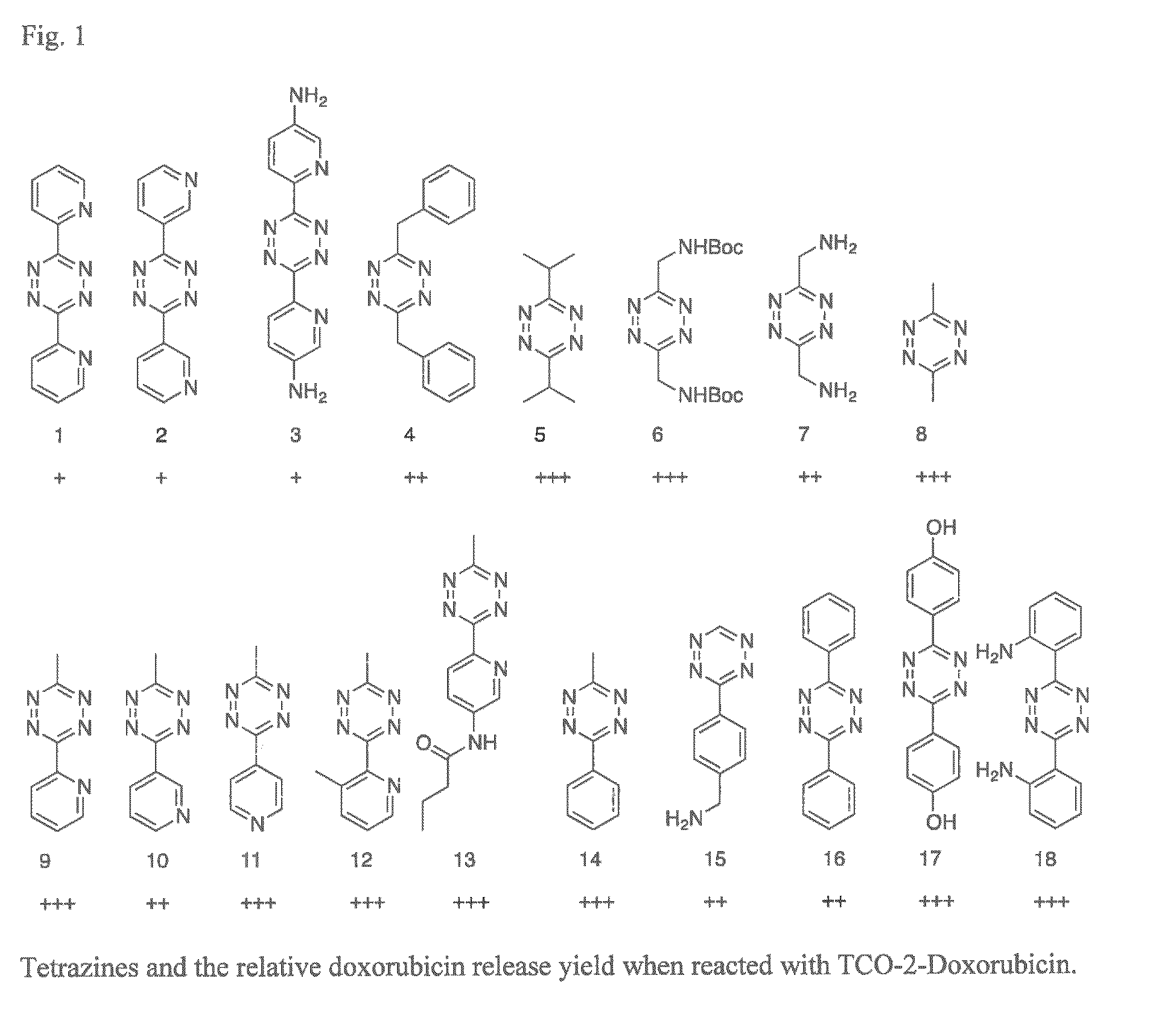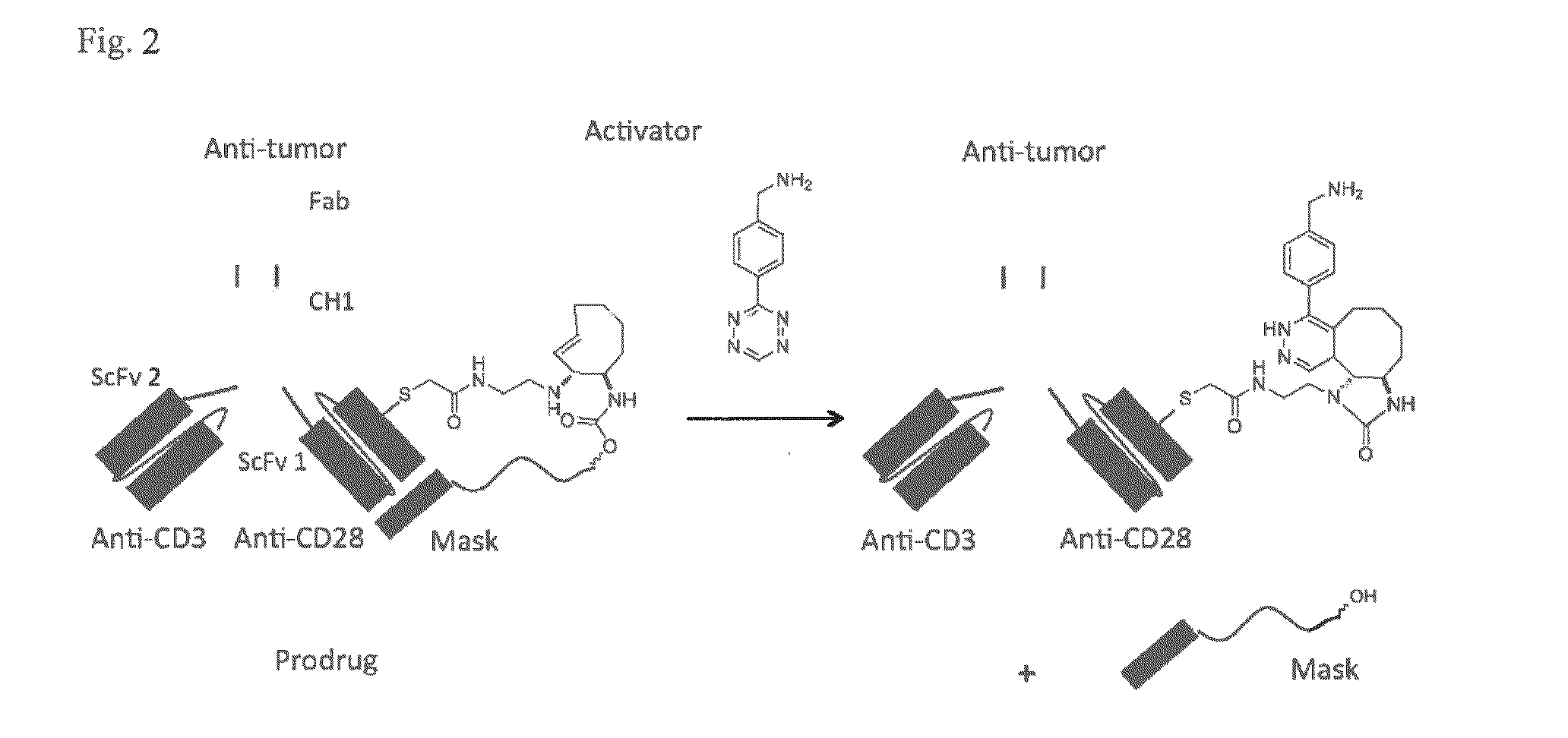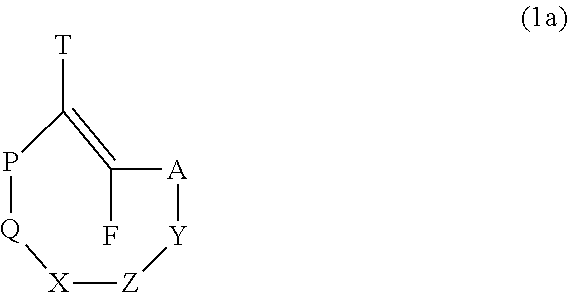Bio-orthogonal drug activation
- Summary
- Abstract
- Description
- Claims
- Application Information
AI Technical Summary
Benefits of technology
Problems solved by technology
Method used
Image
Examples
embodiment 1
Additional Embodiment 1
[0188]With reference to formula (1a) and (1b) for Triggers that function via cascade-mediated release or elimination (i.e. cascade mechanism), when p=1 and n=1 it is preferred that LD is linked to TR via N or NH or an aliphatic or aromatic carbon, wherein these atoms are part of the linker; and when p=1 and n=0 it is preferred that MM is linked to TR via N or NH or an aliphatic or aromatic carbon, wherein these atoms are part of DD. It is further preferred that said N and NH moieties comprised in LD or MM are bound to an aliphatic or aromatic carbon of LD or MM.
[0189]With reference to formula (1a) and (1b) for Triggers that function via cascade-mediated release or elimination (i.e. cascade mechanism), when p=0 and n=1 it is preferred that LD is linked to TR via S or O, wherein these atoms are part of the linker; and when p=0 and n=0 it is preferred that MM is linked to TR via S or O, wherein these atoms are part of MM. It is further preferred that said S and O...
embodiment 2
Additional Embodiment 2
[0191]Further preferred activators for use with Triggers based on the cascade mechanism are:
[0192]The 1,2,4,5-tetrazine given in Formula (8c-g), wherein each R1 and each R2 independently are selected from the group consisting of H, alkyl, aryl, CF3, CF2—R′, NO2, OR′, SR′, C(═O)R′, C(═S)R′, OC(═O)R′″, SC(═O)R′″, OC(═S)R′″, SC(═S)R′″, S(═O)R′, S(═O)2R′″, S(═O)2NR′R″, C(═O)O—R′, C(═O)S—R′, C(═S)O—R′, C(═S)S—R′, C(═O)NR′R″, C(═S)NR′R″, NR′R″, NR′C(═O)R″, NR′C(═S)R″, NR′C(═O)OR″, NR′C(═S)OR″, NR′C(═O)SR″, NR′C(═S)SR″, OC(═O)NR′R″, SC(═O)NR′R″, OC(═S)NR′R″, SC(═S)NR′R″, NR′C(═O)NR″R″, NR′C(═S)NR″R″ with each R′ and each R″ independently being H, aryl or alkyl, and R′″ independently being aryl or alkyl.
[0193]Other preferred activators for use with Triggers based on the cascade mechanism are:
[0194]Other preferred activators for use with Triggers based on the strain release mechanism are:
[0195]The Activator can have a link to a Masking Moiety MM such as a peptide, prot...
embodiment 3
Additional Embodiment 3
[0196]Some embodiments satisfy the one of the following formulas:
PUM
| Property | Measurement | Unit |
|---|---|---|
| Mass | aaaaa | aaaaa |
| Digital information | aaaaa | aaaaa |
| Time | aaaaa | aaaaa |
Abstract
Description
Claims
Application Information
 Login to View More
Login to View More - R&D
- Intellectual Property
- Life Sciences
- Materials
- Tech Scout
- Unparalleled Data Quality
- Higher Quality Content
- 60% Fewer Hallucinations
Browse by: Latest US Patents, China's latest patents, Technical Efficacy Thesaurus, Application Domain, Technology Topic, Popular Technical Reports.
© 2025 PatSnap. All rights reserved.Legal|Privacy policy|Modern Slavery Act Transparency Statement|Sitemap|About US| Contact US: help@patsnap.com



